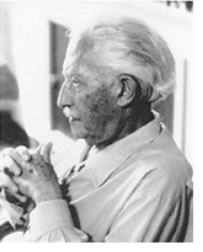Development
In the previous lesson you learned about the development of infants. Now you will learn about the development of children and teens. You will look at the physical, cognitive, and social growth that occurs. Then explore how culture and gender influence behavior.
Physical growth continues but at a slow pace during childhood.
This stable growth pattern changes abruptly in adolescence where there is an abrupt growth spurt that lasts about two to three years. This spurt happens in girls at about ages ten to eleven and in boys about two years later. This quick spurt leaves adolescents feeling awkward and self-conscious and it signals their transition from childhood to adolescence.
Adolescence
Adolescence is defined as the period between childhood and adulthood which makes these years awkward because teens aren't children and they aren't adults so they feel caught in between.
In our society adolescence is considered the time from the onset of puberty to the age that adult responsibilities are taken on, usually around ages 21 or 22. Circumstances can make this earlier or later.
Puberty
With the exception of infancy, the biological changes that occur during adolescence are greater than at any other time in life. Puberty is the marked beginning of adolescence and it includes the developmental changes that lead to the ability to reproduce.
Maturation
Maturation for boys and girls is not exact. Maturation can be early or late for boys and girls. As stated before, girls mature earlier than boys. This maturation can also differ within the genders.
Boys who mature early are usually more muscular, taller and popular than their peers. Boys who mature late may lack self-confidence and be the object of teasing.
Girls who mature early feel awkward and may experience some lack of self-confidence. Girls who mature late may feel anxious about their maturity and feel unpopular.
G. Stanley Hall, founder of the American Psychological Association, described the time of adolescence as a time of "storm and stress" due to hormonal changes.
Research has shown that although there are mood swings, changes in activity levels and aggression tendencies due to hormone changes, the greater impact on maturation appears to be from society and culture.
Peers
Socially, peers have a great influence. Peers influence dress, hairstyles, music tastes and speech.
Modern research shows that although adolescents start pulling away from parents and begin to establish independence, the parent child relationship is generally not the stormy situation that is often depicted. Conflicts about school, curfews, chores, money and appearance arise but most are resolved in a positive rather than negative way.
Research supports the influence of peers and the importance of cliques to the adolescent.
Identity
Many psychologists, including Erik Erikson, believe that the main task of adolescence is finding identity. Identity is the adolescent's attempt to find out who they are. Some teens experiment with dangerous situations such a drugs, sex, and eating disorders.
Some researchers tend to believe that connections between the emotional limbic system and the prefrontal cortex, which is the decision-making structure, do not reach their full strength until the late teens or early twenties.
This explains why strong emotions often overwhelm the rational decision making part of the brain and why adolescents are more impulsive and do dangerous things. This lack of connections can cause teens to sometimes do things that they know might not be the best decision but they lack reasoning abilities to foresee the consequences of their actions.

Many people believe that adolescents have huge problems in the area of self-esteem and that is why they get involved in dangerous situations.
Analyses of studies of over 150,000 teens have not found low self-esteem among teens, however. In fact, most report a supportive family, a sense of self-confidence, good friends and support to deal with their problems in a positive way.